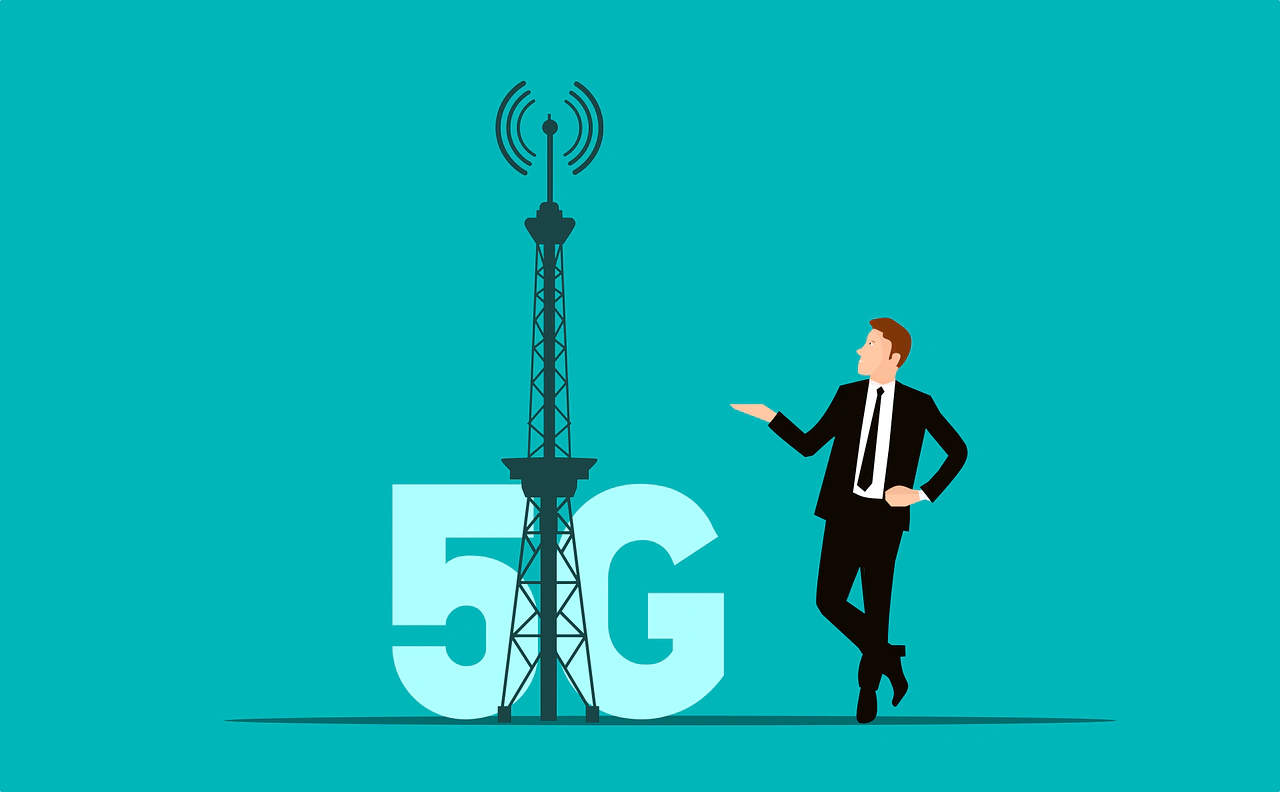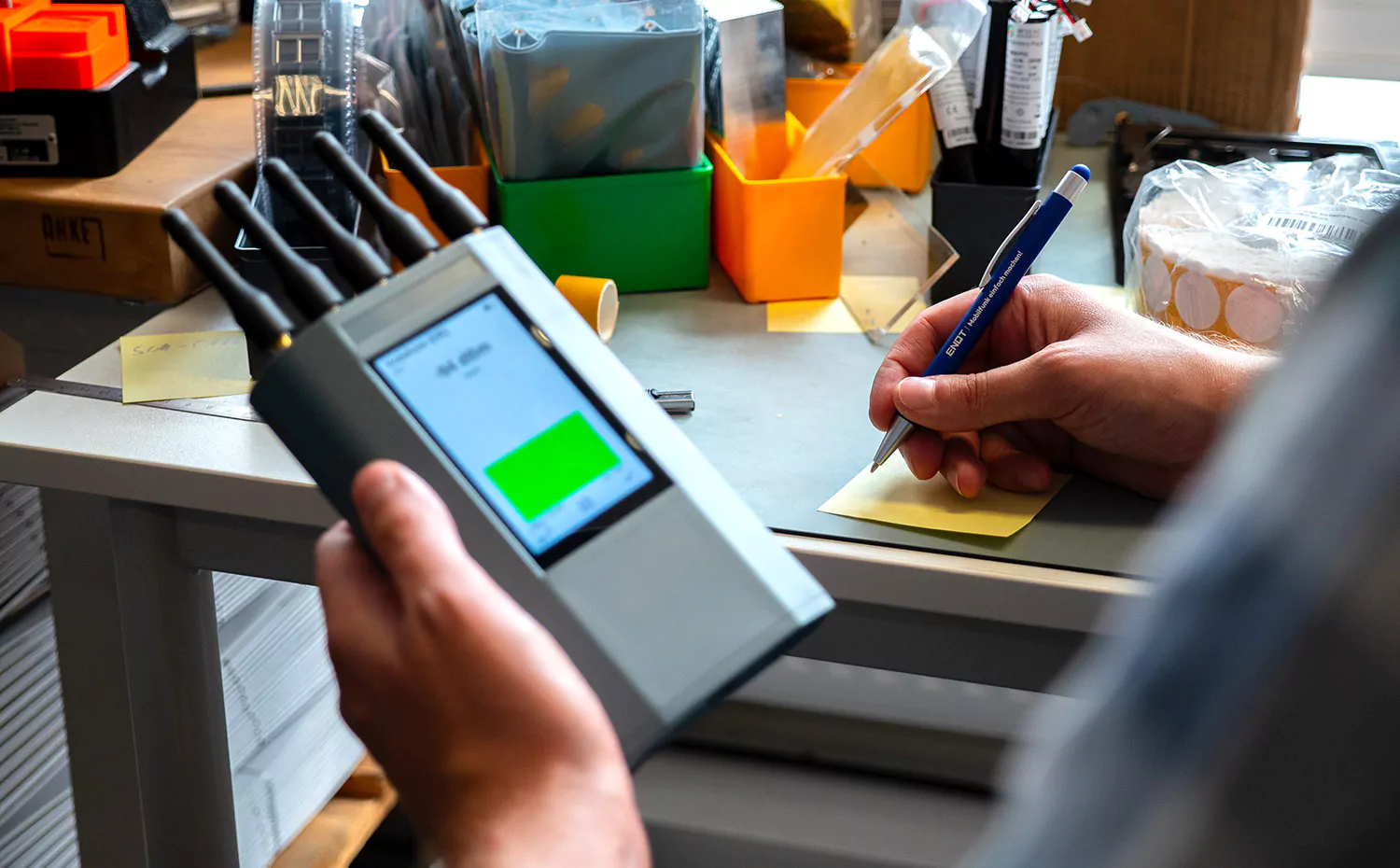Today, the LTE successor technology is already available to many millions of people in numerous cities and regions. Find out about the current status of the 5G rollout in the following article.
Brief introduction to the 5G mobile communications standard
Before we look at the specific status of the rollout, let us first briefly introduce the most important information about the 5G mobile communications standard. 5G stands for fifth-generation mobile communications and is the successor to LTE (4G). The technology allows high data transmission rates of up to several gigabits per second and low latency times of less than one millisecond in some cases. Thanks to these properties, data can be transmitted at high speed without any noticeable delay. 5G opens up new possibilities for the digitization of everyday life. It provides the technical basis, for example, for autonomous driving, the Internet of Things (IoT) or the digitization of Industry 4.0 processes. By the way: We have already dealt with the exact differences between 5G and its predecessor, LTE, in a series of articles on this blog.
What do the specifications sub 6GHz 5G and mmWave mean?
Fifth-generation mobile communications open up entirely new frequency ranges. A wide range of frequencies from below one gigahertz to 30 gigahertz and more can be used. As with the previous mobile communications standards, the basic rules apply:
high frequencies = high bandwidths and low ranges
low frequencies = low bandwidths and high ranges
5G with frequencies below six gigahertz is referred to as sub 6GHz 5G. For high frequency ranges of 20 gigahertz and more, the designation mmWave is used. mmWave achieves bandwidths of several gigabits per second, but only has a range of a few hundred meters and not several kilometers, like sub 6GHz 5G. If we talk about the current 5G network rollout, German mobile providers are currently operating in the sub 6GHz 5G frequency range. The achievable bandwidths in this frequency range are far below what the mobile communications standard theoretically allows. Data rates remain limited to a few hundred megabits per second despite 5G. However, a single radio cell covers a relatively large radius.
The actual status of the 5G rollout at the various German mobile network operators
The following is a brief overview of the status of the 5G rollout of the four German network operators. A more detailed picture can be found in the network rollout maps that the providers make available on the Internet. As addressed in the previous chapter, the operators are using the 5G frequencies in the 2 gigahertz and 3.6 gigahertz frequency ranges auctioned in 2019, as well as existing LTE frequencies. This is because 5G can be rolled out virtually piggyback on LTE. mmWave does not yet play a role in Germany. The frequencies required for this have not even been auctioned yet. mmWave 5G is therefore not expected for several years, from around the mid-2020s.
Deutsche Telekom’s network expansion
Deutsche Telekom began the rollout in the summer of 2019. It is using the auctioned frequencies in the 2- and 3.6-gigahertz range as well as already available LTE frequencies. By the end of 2019, Telekom already had around 450 5G antennas in operation in major German cities. By mid-2020, there were already 12,000 5G antennas. They reached around 16 million people at that time. The coverage quickly climbed to over 40 million people. At the end of 2020, coverage was 55 million people, around two-thirds of the total German population. According to current plans, 80 percent of the population (90 percent of the area) is to be covered by 5G in 2021 and 99 percent in 2025.
Network expansion at Vodafone
Vodafone, like Deutsche Telekom, started network expansion very early. The company launched into the 5G era as early as July 2019. Initially, the network operator focused on larger cities and communities. Very quickly, however, rural regions were also covered by 5G thanks to the use of the long-range 700 MHz frequencies. By the end of 2020, around 15 million people in the Vodafone network were covered by the new mobile communications standard. This number is expected to double by the end of 2021.
Network expansion at Telefónica (O2)
Telefónica (O2) started the rollout much later than Deutsche Telekom and Vodafone. The first 5G sites did not go online until October 2020. The network operator initially focused on the major cities of Berlin, Frankfurt, Hamburg, Cologne and Munich. Other cities were quickly added. The focus of the network expansion is on densely populated areas. In the meantime, Telefónica’s 5G network is accessible to around 13 million people. The next goal is to achieve population coverage of 30 percent by the end of 2021. By 2022, 50 percent of the population should be able to use the new mobile technology. The plan is for the network to be available nationwide by 2025.
A fourth mobile network operator: The network expansion of 1&1 Drillisch AG
1&1 Drillisch AG is a new mobile communications operator launching in Germany. Although 1&1 Drillisch AG has purchased several 5G frequencies at auction, it does not yet have its own mobile network. At the end of 2020, Drillisch concluded a contract with Telefónica for national roaming in Germany. This allows Drillisch customers to use the Telefónica network. However, only for the existing 2G, 3G and 4G mobile communications standards. 5G is excluded from national roaming. It is not yet known when 1&1 Drillisch AG will begin building its own network. CEO Ralph Dommermuth does not expect the company’s own 5G network to be launched on the market before 2022, but it is already clear that the requirements of the German Federal Network Agency must be met and that a rapid network rollout is necessary. Failure to comply could result in the compulsory return of the radio frequencies purchased at auction. Accordingly, the 1&1 Drillisch mobile network must reach 25 percent of households by the end of 2023 and 50 percent of households in Germany by the end of 2025. At least 1,000 5G base stations must be set up for this purpose.



